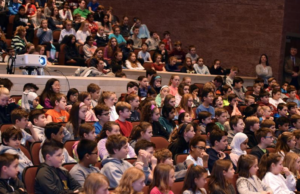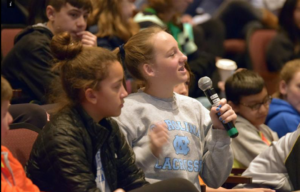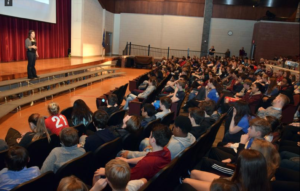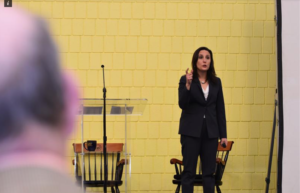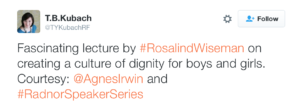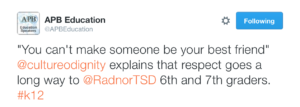Rosalind Wiseman's Blog, page 25
January 26, 2017
The Right to Be Human
On January 25th, Karla Soto, a 16 year old junior at Silver Creek High School, performed at the Abash the Past Poetry Slam that took place in the school’s library. Karla had never presented her writing in public before but her powerful message inspired the crowd of educators, administrators, and students. She loves writing, reading, and playing the violin. Here is the essay she shared:
I am afraid. I am scared, for I no longer feel secure about my future. I am the daughter of an immigrant family. I was raised as Hispanic American; grew up with two cultures, two languages and by a single mother. Nothing was ever kept from me, and my mother made sure of that. My mother was one of the strongest women I have ever met. She worked so hard to get me where I am today. With her strong will and her great advice I have become someone I am proud of. She along with many other mothers in America and all across the world have become both a mother and a father. She made sure that I had everything I wanted, she made sure to always put me first and love me unconditionally. She took care of me even when she got the shingles, she would carry me every morning to my aunt’s house so she could go to work and give me the best. She would make sure I got into the best schools and had the best teachers.
But all that effort, all those hard working hours she spent working for my future, may have been in vain. For it seems our country is headed toward more hate and less equality than I ever experienced. My home has been invaded by uncertainty, not only do I see hatred on social media, but on the streets. We are less united as human beings than we were 10 years ago.
We fight against each other more than ever for a war that should not have sides. We are in a fight that should be resolved by words and should be worked on by everyone. Instead we have bombs killing people, rocks breaking windows and most of all we have people against people, human against human. We have so many conflicts with each other that it’s hard to keep up. We are fighting for the right of woman, black people, and the LGBQT community. Three different groups, but yet they all share the same goal. We have immigrant families fighting for the right to be happy, and we have people fighting for the right to choose if they want to be a mother. While we are all blinded by our own problems we miss the tragedies that are happening around us: Kindergarten students dying by bullets, innocent people killed by bombs, and our fellow humans in Syria fighting for the right to just be alive.
Why are so divided? Why can’t we work together if we seem to have the same goal? The right to be accepted, the right to keep our lives from being taken by bullets and bombs, the right to be equal to all, the right to be human.
Recent Posts
The Right to Be Human
When do Teachers Stay Neutral? // ADL Article
Women’s March // Rosalind’s Speech
 7k
7k

 10k
10k
 Follow
Follow


January 24, 2017
When do Teachers Stay Neutral? // ADL Article
This article originally appeared on Rosalind’s Classroom Conversations on ADL’s website.
Is a 6th grader chanting “Build a Wall” in his classroom a political statement or a deliberate act to intimidate other students in the class? What should a teacher do when witnessing this behavior?
Since the election, some students have shared with me the experience of watching educators refuse to stop students from chanting this slogan or other phrases associated with current political rhetoric because they believe they have to stay “neutral.” At most, they’ll quiet the chanting students because they’re disruptive.
So when should an educator be neutral? And what does being neutral mean?
An example of effective neutrality is when an educator facilitates a discussion between students so both sides of an argument can be represented. And that is what schools should be about: learning to engage in constructive dialogue and hear different points of view. The educator’s neutrality enables a learning environment where every student feels that their experience and opinion are respected. This is exactly the kind of environment where students learn best and want to be in school.
A teacher isn’t being “neutral” by not intervening when a student chants: “Build the wall!” or any of the other similar exclamations we have heard since the presidential election. Using this rhetoric is disrespectful to others’ history, identity, experience and perspective. Said another way: you can’t be neutral when someone is being disrespectful or using bigoted language. If you do, you look like you are siding with the bigotry or you’re too weak or unskilled to face the person spewing it.
Remember, for better and worse, schools are where young people learn our community values. Teachers can never be neutral about kids being targeted for discrimination and cruelty. So it’s critical for an educator to stop the chanting student by responding similarly to what they should say anytime they hear a cruel or discriminatory comment at school.
Say something like: “What you’re saying is against what our school community stands for so you need to stop now.”
If the student says they have the right to say what they want, here’s a suggested response:
I am happy to schedule a time later today to discuss your right to say these things. Please email me some good times and we will schedule it. In the meantime, I want you to read our school’s policy on using this type of language so we can have an informed conversation.
I also want you to think about something in preparation for meeting with me. Why do you want to say these things to other people? You must know that they make other students feel hurt, worried, and that school isn’t a comfortable place for them to be. Why is your right to hurt others more important than their right to feel welcome about coming to school? I don’t want you to answer now. I want you to think about it and then we can discuss it when we meet.
Let’s be clear that it’s not coddling children when we speak out in these moments. It’s showing them how to be strong capable people who can be productive members of our communities. So, yes, it’s true that children can be mean and it’s also true that our children need to learn how to deal with mean people. But learning to be a strong person doesn’t mean just accepting bad behavior, allowing people to say and do whatever they want or believing you have the right to do the same. Instead, learning to be strong means believing you and others have the right to be treated with dignity and you have the confidence to speak out when you are not being treated with respect.
None of us should be neutral about that.
Recent Posts
When do Teachers Stay Neutral? // ADL Article
Women’s March // Rosalind’s Speech
Meet Marley // Interview With Our Newest Intern
 7k
7k

 10k
10k
 Follow
Follow


January 23, 2017
Women’s March // Rosalind’s Speech
On Saturday, we were proud to be a part of the largest protest in America’s history. We stood next to our brothers and sisters as we marched for the safety of our children, for people of all faiths, for the fight against bigotry and mockery, and to acknowledge that this country is experienced differently by its citizens. It was a powerful day, and one that we are grateful to be a part of it.
Rosalind had the honor of emceeing the march in Orange County while Charlie and Katie marched in the streets of Denver.
Below is the speech Rosalind delivered 25,000 men, women, children, and teens in Santa Ana, CA.
I am teacher, mother, daughter, wife, sister, and I have the incredible job of working with young people to make the world a better place. We are many different people but we are here for one shared reason: To come together to take ownership and affirm our collective belief that everyone–no matter who they are, where they come from, the color of their skin, religion, sexual orientation, abilities, how much money they have, or how old they are–deserve to be treated with dignity.
We are not alone: We are one of 673 sister marches–49 in California alone. From Wyoming, Mississippi, Georgia, Maine, Hawaii, Antarctica, South Korea, Canada, Germany, Kenya, the Congo, India, New Zealand, Madagascar, and we are united in common purpose to stand for upholding the dignity of all.
Why are we here? We are not here standing against anyone. We are here to stand for…
Our children feeling safe and welcome in schools
People of all faiths feeling welcome in our neighborhoods.
Reaching towards each other and listening when we are angry
Speaking out against mockery and demeaning people and we will not tolerate it in our leaders
Acknowledging that this country is experienced differently by our citizens
Every person’s feeling of safety and inclusion is not a political issue–it is a basic right that our democracy is founded on.
It is these beliefs that make us proud to be Americans and marching today.
And to the young people: Adults in the last year have behaved badly. They haven’t been good role models. Some of them are continuing on that path.
This is your moment to hold adults accountable . No, it’s not all on your shoulders. You are surrounded by adults who stand ready by your side. People often say young people are our future. I say you are our right now.
We will face our future with courage, persistence, humility. Some of us have been doing this work for decades, some of us just arrived, but all of us are connected now. Leave here knowing that this is a defining moment where we collectively began to put our values into action. I can’t wait to see what we will do.
Photos courtesy of Danielle Cohen, Be Seen Photography




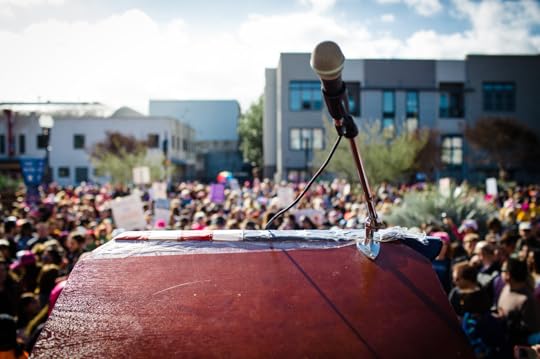

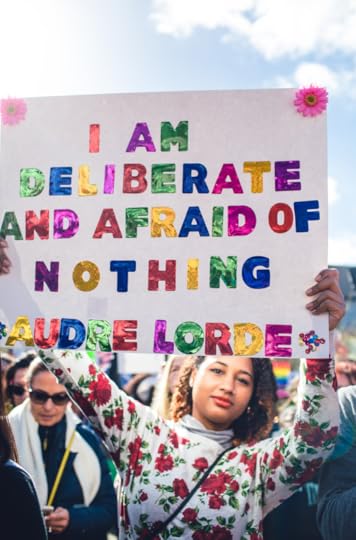


Did you march? Do you have an experience you want to share? Please email us at curious@culturesofdignity.com
// Articles we love
CNN — You participated in the Women’s March. Now what?
Women’s March — 10 actions for the first 100 days
Vox Video — Some of the loudest voices from the Women’s March were the youngest
Teen Vogue — 32 Kids and Teens Told Us Why They’re Getting Involved With the Women’s March
Atlantic — The Significance of Millions in the Streets
Recent Posts
Women’s March // Rosalind’s Speech
Meet Marley // Interview With Our Newest Intern
Rosalind’s Visit to Radnor, PA
 7k
7k

 10k
10k
 Follow
Follow


January 17, 2017
Meet Marley // Interview With Our Newest Intern
We are very lucky to have Marley Davis-Martin intern with us this year! Marley is a junior from Fairview High School in Boulder, CO and is working with the Cultures of Dignity team on marketing campaigns, outreach, and creating her own content for the website!
Meet Cultures of Dignity’s newest intern!
Cultures
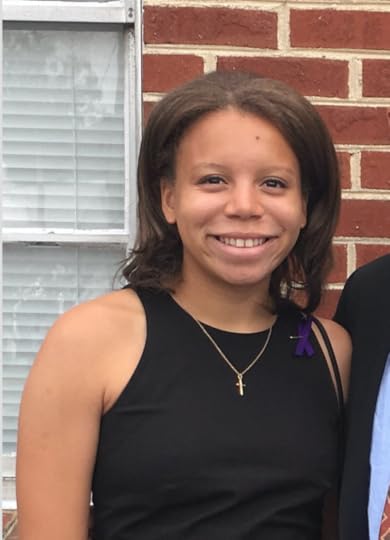 of Dignity: Tell us a little about yourself!
of Dignity: Tell us a little about yourself!Marley: I go to Fairview High School and play volleyball, basketball, and run track. I live in Boulder with my parents and two dogs, Jasmine and Quincy.
CoD: Why did you reach out to Cultures of Dignity to be an intern?
Marley:I wanted to be part of something that creates change within and beyond my community, and this seemed like the perfect way to do it. I also worked with Rosalind on a Today Show segment before becoming an intern.
CoD: If you could have any superpower what would it be?
Marley: I would want the ability to read minds.
CoD: What projects are you working on with CoD?
Marley: I work on social media content and with different influencers for the company. I also create my own content for the blog and assist with other publications.
CoD: What is an issue you see in schools you want to fix?
Marley: Speaking up about important issues and speaking out matters; too often things are swept under the rug because they’re uncomfortable to talk about or no one cares enough to talk about them.
Recent Posts
Meet Marley // Interview With Our Newest Intern
Rosalind’s Visit to Radnor, PA
Meet Jordyn // Interview with Activist Student
 7k
7k

 10k
10k
 Follow
Follow


January 16, 2017
Rosalind’s Visit to Radnor, PA
Rosalind traveled to Radnor, Pennsylvania on January 11th and 12th to talk with hundreds of parents and students about creating cultures of dignity in their communities. Rosalind’s work was supported by the Radnor Township School District Parent-Teacher Organizations/Parent-Teacher-Student Association and The Agnes Irwin School’s Center for the Advancement of Girls. One of the highlights of her visit was meeting with different student groups in advance of her presentations to find out what issues were most important to students. Rosalind then spoke to over five hundred parents, educators, school board members, and other community members at Agnes Irwin School. The following day, Rosalind presented to students at Radnor Middle School and Agnes Irwin School on social conflicts, cliques, social media and power struggles between friends.
The following pictures are from Radnor Township School District’s article.
(Video via 6ABC)
Tweets from the events:
Interested in bringing Rosalind and the Cultures of Dignity Team to your community? Learn more about different speech topics offered and pricing by clicking the speaking button below.
speaking
Recent Posts
Rosalind’s Visit to Radnor, PA
Meet Jordyn // Interview with Activist Student
Parenting ADHD Now! // Book Excerpt
 7k
7k

 10k
10k
 Follow
Follow


January 11, 2017
Meet Jordyn // Interview with Activist Student
We sat down with Jordyn Monnin, a passionate senior at Silver Creek High School, to talk about the her anti slut-shaming movement, Abash the Past. Jordyn started Abash the Past as her senior leadership class project to raise awareness around the effects of slut-shaming. It’s a powerful cause and something that will help open a healthier conversation in our community!
We loved meeting with Jordyn because we love how she is taking ownership of an issue that is so relevant to young people. We asked her to share with us her inspiration and the role educators, parents, and students can take so slut-shaming ends.
Thanks for the incredible work you are doing Jordyn!
Cultures of Dignity: Tell us a little bit about yourself and how you started Abash the Past
Jordyn Monnin: My sophomore year of high school, I decided to have sex which led people calling me a ‘slut’ throughout the halls for months. I lost my friends and I felt like there was nothing I could do. After the rumors passed, my school put on a production of Cabaret and my friends and I had to pretend to be ‘ladies of the night.’ The day after opening night, one of my best friends who has never even kissed a boy was called a ‘slut.’ She fell into a state of depression where she felt there wasn’t a safe environment at school. That’s where I came in. I couldn’t bear to see my friends feeling lost in school, a place where they should be growing. I brought the topic up to my principal and I started a support group during lunch for people who needed to talk about or wanted to end the shaming.

CoD: What do you hope to see happen with this project?
JM: My goal with this project is to spread awareness about slut-shaming by educating high school students about the effects of slut-shaming and how to stop it from happening at school.
CoD: Where do you find inspiration?
JM: I’m a fan of Brave New Voices which is a stand up poetry slam competition. Every time I hear people stand up and speak about something they care about I get the chills and one day I hope I too can give someone else the chills that make you want to become an impactful person to the world.
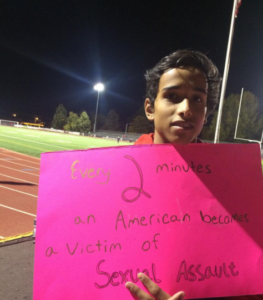 CoD: What advice can you give to someone who wants to start an organization or get behind a cause they truly care about?
CoD: What advice can you give to someone who wants to start an organization or get behind a cause they truly care about?JM: Don’t hold back! If you start to feel inspired or passionate about something no matter the topic, join a cause, get your friends together for coffee and talk about certain issues, or try to start something at your school. Just talking to people will make a difference because it makes that person think about the topic. So don’t hold back! You can change something for the better if you just go for it!
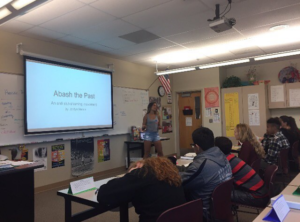
CoD: How can students, educators, and parents help?
JM: For all students, make an effort to not shame other peers. Also, open up the conversation to your friends and talk about ways to stand up to someone who you see in the hall is slut-shaming.
Educators have a big impact on growing teens. Making it known that slut-shaming is unacceptable near you will let teens know you created a safe environment for them to go to for help. It is then your responsibility as the educator to know who to direct them to if they need professional help.
As sad as it may sound, a majority of victims first get attacked by their parents. Even if your daughter walks down the stairs in a “slutty” outfit, refrain yourself from calling her a slut by simply asking her to look more presentable for school. When your son wants to join the dance team, show him representations of strong, smart, male dancers so he’s never feeling like a “pussy” or “weak.”
Abash The Past Petition Twitter Instagram Facebook
Recent Posts
Meet Jordyn // Interview with Activist Student
Parenting ADHD Now! // Book Excerpt
Supporting Your Teen Through SAT/ACT Prep // Magoosh Guide
 7k
7k

 10k
10k
 Follow
Follow


January 9, 2017
Parenting ADHD Now! // Book Excerpt
If you are a parent trying to understand what you can do to help your kids overcome the challenges of an ADHD brain, we understand the complexity. Mixed with frustration, joy, and confusion, parenting a child with ADHD can be demanding.
Elaine Taylor-Klaus and Diane Dempster explore strategies to navigate parenting a child with ADHD in their book Parenting ADHD Now!: Easy Intervention Strategies to Empower Kids with ADHD.
The following excerpt explores motivation as a tool to help your child succeed from Chapter 3, “Managing Attention”, in Parenting ADHD Now!
Identify Motivators
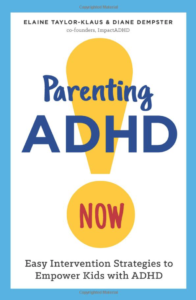 Nearly every parent we work with asks at some point, “Why can’t my kid just ___ ?” You can fill in the blank with a variety of phrases: get homework done? listen to me? stop talking back? get out of bed in the morning?
Nearly every parent we work with asks at some point, “Why can’t my kid just ___ ?” You can fill in the blank with a variety of phrases: get homework done? listen to me? stop talking back? get out of bed in the morning?
The reality is that they can’t just anything! The ADHD brain needs to be genuinely interested in something to take action. For people who have no real challenges with executive function, this can be one of the hardest things to understand, even though it’s simple science. When most people without the challenge of ADHD are faced with something they really don’t want to do, they simply press an imaginary “just get it done” button, and voila!—they are able to make it happen. In the ADHD brain, the challenge is that the “just get it done” button has a glass box around it! They can see it, but they have a very hard time accessing it.
The presence of a motivator is what fuels the neural pathways in the ADHD brain. Motivation is a powerful tool that helps kids with ADHD take action. Five things tend to motivate the ADHD brain, but not everyone with ADHD is motivated equally by all of them. Here are some clues to help you identify what will work for your child:
Interest. The ADHD brain seeks stimulation, and things that it finds interesting are stimulating. Parents often complain that their child won’t do anything he doesn’t want to do. To some extent, that’s because it’s not compelling enough. Students do well in classes with teachers who are engaging and in subjects they find interesting. While things that are boring are kryptonite for an ADHD brain, interest ignites a power chamber of fuel.
Urgency. People with ADHD often wait until the last minute to do things—whether it’s starting homework or getting ready to leave the house. This is because the frontal lobe of the brain (where the executive functions reside) is sluggish and isn’t properly stimulated to get things done. Urgency shifts to a different part of the brain—the primitive brain—which provides the chemical incentive to take action. Deadlines can be really effective motivators for people with ADHD.
Novelty. The ADHD brain is stimulated by things that seem new or different. This can be as simple as a distraction or as complicated as the complex changes that come with the beginning of a new school year. Many students will start off strong, motivated by new teachers, classmates, and schedules. As the school year progresses and is no longer novel, their engagement starts to wane. This is why new places to do homework or new strategies can be helpful—effectively, new is interesting.
Play/Creativity/Fun. Humans are inherently motivated by things that are fun, pleasurable or enjoyable. This is all the more true for people with ADHD, who need some kind of stimulation to engage or take action—and there is no better stimulation than something that is fun, playful, or creative. Fun can tie into other motivators, like being interesting or novel or competitive. Mostly, it’s a motivator in and of itself. Want to get a kid with ADHD to get something done? Turn it into a game, and you’re halfway home.
Competition. Competition is great way to offer the ADHD brain the stimulation it seeks. In fact, it builds on many of the other motivators. Competition usually offers the possibility of a reward and often plays to someone’s strengths. Competition can provide interest, urgency, novelty, and play. However, competition doesn’t work for everyone. For example, people who struggle with anxiety can be stressed rather than motivated by the chemical reactions that come with urgency.
As a parent, start by identifying what motivates your child and helping your child understand the role that motivation plays in her success. Over time, work with your child to identify what she sees as her motivators. Eventually, your child will learn to identify her own motivators. When that happens (when your child begins to understand the concept and create motivation tools to help herself), you’ll know you’ve taught a lifelong lesson.
Recent Posts
Parenting ADHD Now! // Book Excerpt
Supporting Your Teen Through SAT/ACT Prep // Magoosh Guide
11 Ways Schools Can Help Students Feel Safe in Challenging Times // ADL Article
 7k
7k

 10k
10k
 Follow
Follow


January 3, 2017
Supporting Your Teen Through SAT/ACT Prep // Magoosh Guide
This guest post was written by David Recine from Magoosh
Getting ready for college is a stressful time in a teen’s life. SAT and ACT prep can be especially intense. Fortunately, there are ways that parents can ease test anxiety and give their teens the support they need for exam success.
Stay calm and keep things in perspective
Your child will be anxious about his or her test scores. So will you. You care about their future as much as they do, and you may know more than they do about their upcoming challenges. But test anxiety is contagious. Keep your worries in check. If you can face test prep setbacks calmly, your teen will have the confidence to keep trying.
No gossip or bragging
When your child is making great progress in their test prep, it’s easy to run out and tell everyone. But you know what’s hard? Preparing for the SAT or ACT in front of an audience. Mastering test skills is stressful enough with just you watching your teen. Keep your child’s test prep between you and them. That way, your teen will focus on their own performance, not on what other people think of their performance.
Start Early and Plan in Advance
Talk to your child about the importance of SAT and ACT scores early on, in their first or second year of high school. Encourage them to get started with test prep by the beginning of their junior year at the latest. Help your teen set an early test date so that he or she has time for a retake if necessary.

Recent Posts
Supporting Your Teen Through SAT/ACT Prep // Magoosh Guide
11 Ways Schools Can Help Students Feel Safe in Challenging Times // ADL Article
How To Help Every Child Fulfill Their Potential
 7k
7k

 10k
10k
 Follow
Follow


December 21, 2016
11 Ways Schools Can Help Students Feel Safe in Challenging Times // ADL Article
11 Ways Schools Can Help Students Feel Safe in Challenging Times
Following the 2016 Presidential election, we have seen alarming images and biased language in schools and universities: name-calling, hate-filled taunts, vandalism, racial slurs and epithets, offensive graffiti on desks and bathroom walls. In addition, many young people—especially those whose identities were targeted during the campaign—are fearful about their futures. Teachers have had to work overtime to console those students and provide resources to get help. Schools must be places where students feel safe, supported and respected, especially in these challenging times. Below are prevention, intervention and education strategies in order to promote inclusive school environments where young people can learn, thrive and become their best selves.
1. Establish clear school policies and reinforce goals
Make sure your school’s anti-bullying, harassment and non-discrimination policies are current, reflect district and state guidelines and include clear definitions and consequences. Establish technology use guidelines and have students/families sign acceptable use agreements. Publicize policies and guidelines in multiple ways. Develop and/or reinforce your school community’s goals around respect, civility, regard and care for others, equity and inclusion. If and when incidences of bias occur, make sure you acknowledge publicly that this is unacceptable, taking care not to “out” people engaged in it.
2. Assess your school, classroom and self
This might be a good time to assess yourself and your school by reflecting on the current and historical influences that shape your school’s culture. Consider the following: school mission and policies, how students interact with one another, the racial and gender dynamics among students, the extent to which parents and families are involved and engaged, how celebrations are approached, the curriculum and instruction materials, etc. From there, develop meaningful action plans that maximize existing strengths, address areas of improvement and develop goals to create positive change by applying principles of anti-bias education. Further, encourage individual staff to do their own self-assessments of their anti-bias approach and principles.
3. Be public and purposeful about being inclusive
Find ways to let everyone in the school community know that school is a safe place, all are welcome and that biased words and actions are unacceptable. Being intentional, public and loud about it sends a strong message that this is a priority for your community. Some examples include: a clear sign/statement at the entrance to the building, a public letter to the school community, a wall mural featuring the diversity of your student body and/or language about being inclusive, an updated mission statement, social media posts, announcements on the public address system, and school-wide events celebrating diversity. Involve the school community in coming up with these ideas and think about ways to do different activities throughout the year.
4. Encourage reporting
Many bias and bullying incidents go unreported. In fact, as children get older, they are less likely to report to adults in their lives—parents, teachers, family and friends. Establish safe and confidential reporting mechanisms for bullying incidents and clear procedures for investigation and response. Make sure students are aware of these procedures and encourage them to tell a trusted adult about threatening or harassing behavior that they experience or observe. Find ways for adults to be more approachable (see #5).
5. Be more approachable
Students often suffer in silence and don’t tell anyone about the bias, harassment or bullying they experience. They often believe it won’t help and may even make things worse. One way to increase their openness to talking with adults is to be more approachable by taking the issue seriously, investing the time and space to listen before moving into problem-solving mode, not harping on the past, and being a role model by not engaging in stereotyping, name-calling and bullying.
6. Teach about bias
What happens in the classroom is valued and important. At the onset, teachers should engage students in a process to create an anti-bias learning environment. Take the time to teach about bias, either by doing direct instruction or by integrating anti-bias education into the curriculum. Use current events, literature, social studies and other subjects to address bias, diversity, bullying and social justice. You may also want to talk about the presidential election, the bias and bigotry that characterized the campaign, and what students can do about it. Also, address the critical issue of identity-based bullying so that students are not targeted based on core aspects of their identity.
7. Involve parents, family and community members
Parents and family members are vital members of the school community. If everyone conveys the same message about bias, hate and discrimination, young people will get that message. Work with the school’s PA/PTA to host a parent education workshop. Get everyone on the same page about school policies, goals, language and how to be an ally. In addition, partner with local youth organizations such as Boys and Girls Clubs to organize events that promote respect for differences.
8. Provide support to targets
Ensure that the crisis intervention team, school counselors and social workers have the skills and knowledge to support students who have been targeted. Assist the target and the target’s family in coping with the impact of the bullying and building skills for dealing with such problems in the future. Make sure not to inadvertently make the target feel responsible for the bullying in any way, or to unintentionally punish the target by limiting access to activities or technology. In addition, make sure counselors understand the fears that many children have as a result of the election, particularly children whose identities were targeted during the campaign, and provide comfort and resources they may need.
9. Teach civics
Now more than ever, teaching young people what it means to be a citizen is critical. Helping students understand the First Amendment, their rights and freedoms, government, how legislation works and their role in it, the rule of law, current events, advocacy and activism are all components of being engaged citizens. While civics education has generally become less of a priority in schools, it needs to be brought to the forefront as much as possible.
10. Inspire ally behavior
One of the most effective tools we can give young people is how to be an ally when faced with bias and bullying. It can be as simple as encouraging them to reach out to someone targeted by sending them a supportive text message or saying hello to them. They can also learn how to safely stand up and tell aggressors to stop; for example challenging bigoted and offensive words. In addition, reporting the behavior to an adult and actively not participating are good ways to be an ally. Being an ally helps the target and also helps the person engaging in allyship feel more powerful by doing something to make a difference.
11. Encourage students to be active
Activism is another way that young people can do something about the bias, discrimination and hate they see in their schools, online community, neighborhood and world—and pro-actively make it a better place. Activism can take many forms: teaching others, advocating for school or legislative policies, demonstrating, creating an online public awareness campaign, writing letters, volunteering, raising money, organizing or signing a petition, etc. Activism is a powerful antidote to feelings of powerlessness and an important part of citizenship.
Recent Posts
11 Ways Schools Can Help Students Feel Safe in Challenging Times // ADL Article
How To Help Every Child Fulfill Their Potential
Dignity is non-negotiable
 7k
7k

 10k
10k
 Follow
Follow


December 19, 2016
How To Help Every Child Fulfill Their Potential
We love this video done by RSA Animate on how to help every chid fulfill their potential. Check it out!
Recent Posts
How To Help Every Child Fulfill Their Potential
Dignity is non-negotiable
8 Strategies To Be the Parent Teens Will Actually Talk To
 7k
7k

 10k
10k
 Follow
Follow






